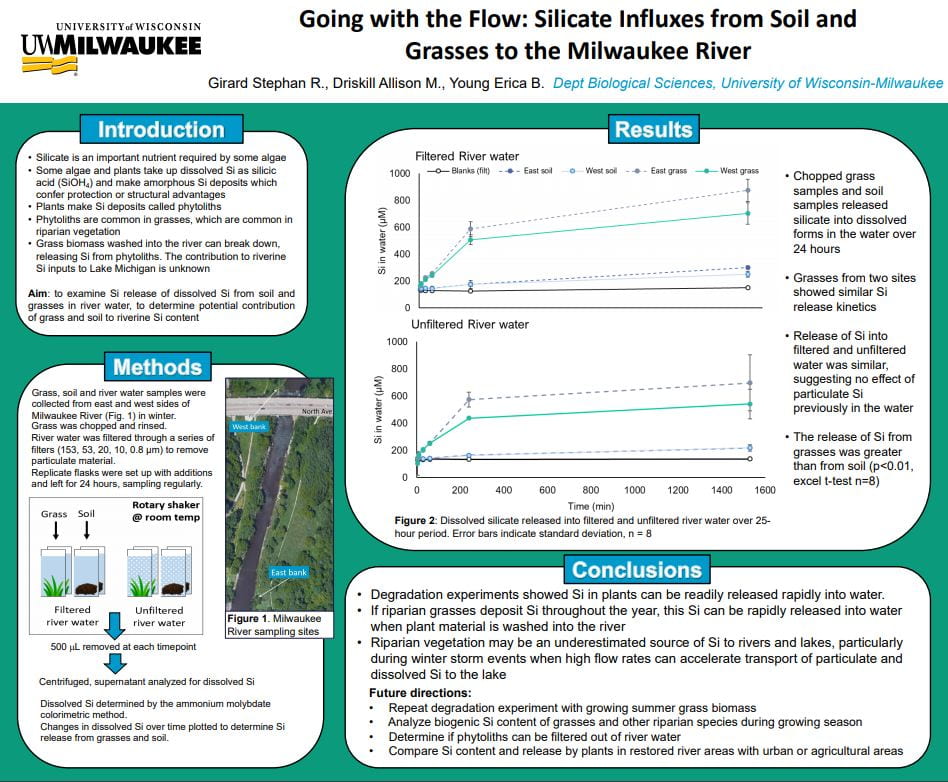Stephan Girard, “Going with the Flow: Silicate Influxes from Soil and Grasses to the Milwaukee River”
Mentor: Erica Young, Biological Sciences
Silicate is a common mineral compound of silicon and oxygen and is an important nutrient for some algae in aquatic ecosystems. One algal group, the diatoms, have strict silicate requirements for growth as they form protective silicified cell walls called frustules using biogenic (biologically transformed) silicate. Though silicates are common minerals, in aquatic ecosystems the dissolved bio-available silicic acid (H4SiO4) is often limiting for diatoms. Inputs of Si to lakes include from rivers. Preliminary data from 2018 and 2019 suggests that biogenic silicate inputs to the Milwaukee river increases with river discharge (P < 0.01, R2 = 0.53). Some higher plants have biogenic silicate deposits, called phytoliths, which can break down and dissolve into silicic acid, contributing to riverine Si inputs. This project aimed to determine silicate content of river grasses and nearby soil, and the significance of phytoliths and plant Si released into the Milwaukee river during snowmelt or rainfall. Samples of grass, soil, and river water were collected from alongside the Milwaukee River during winter. Samples were analyzed for dissolved Si and for total biogenic silicate content using a hot, alkaline extraction. The methodology for extraction of Si from soil was tested using a range of extraction intensities to ensure extractions were representing total biogenic silicate with minimal contribution from mineral Si. To examine conversion of biogenic silicate in grasses to dissolved silicate under natural conditions, samples were incubated in river water and silicic acid content of the water measured over time. This work contributes to ongoing research on the Lake Michigan Si budget, characterizing riverine sources of Si to the lake, especially in the productive nearshore zones.
Click the thumbnail below to open the full sized poster in a new tab.

Your poster was easy to follow for someone who has no background knowledge of this topic (I’m a health sciences student). I also found your visuals in the methods section of your poster to be useful in pulling your information together. Excellent work!